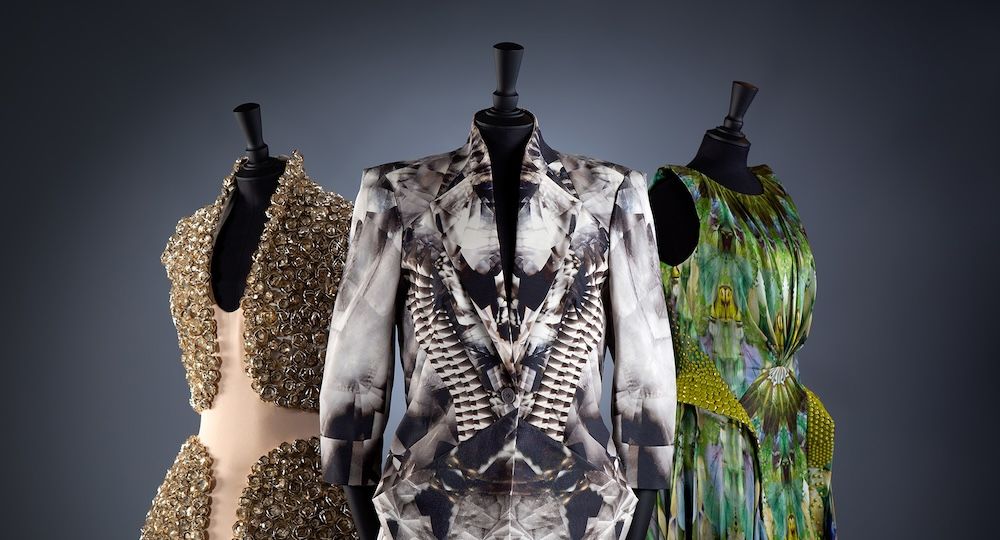
Art Review: Rendezvous
Lee Alexander McQueen/Ann Ray @ The Frist Art Museum
When Thomas F. Frist Jr. founded the museum that bears his name in 2001, its opening exhibitions brought illuminated manuscripts and artworks from the Middle Ages to Music City in what would be the opening salvo of the city’s transformation into a national arts hub. At the time, the idea that the museum would one day house the work of the fashion designer responsible for creating the low-rise pants that gripped a generation was likely not part of the philanthropic plan. However, a quarter century after the museum’s founding, The Frist’s primary summer attraction is dedicated to British fashion provocateur Alexander McQueen. Featuring over 60 garments and 65 rare photographs by McQueen’s long-term photographer, Ann Ray, the career-spanning exhibit proves fashion as a medium that can preserve the visual arts’ deep history while charting its enduring relevance in the era of the global corporation.
Though McQueen’s legacy largely rests on his status as a drug-addled enfant terrible who committed suicide in 2010 at the height of his fame, Rendezvous offers a compelling counternarrative. A perpetual underdog from working-class Scottish roots, McQueen was, in truth, a consummate craftsman whose deep love of history and pop culture’s effects on the plebes inspired his career’s thematic through-line. He may have been at the center of the 90s fashion world that spawned Marc Jacobs, Tom Ford, Kate Moss, and Naomi Campbell, but he saw himself as an –including during his stint at the helm of rarified label Givenchy–a keen social critic who could never quite reconcile the world he found himself atop with the one from which he came.
The most impressive aspect of Rendezvous is the exhibit’s showcase of seasonal fashion lines as coherent artistic texts, which may seem anathema to those not reared on the pages of Vogue. In collections such as 1995’s Highland Rape, McQueen bridges Scottish heritage and England’s history of colonialism within its neighboring territories to recount the 17th and 18th-century Jacobite risings using tartan patterns, distressed fabrics, and a punk sensibility. Even when his collections pay homage to a host of Hollywood movies, from The Shining and The Birds to The Hunger and Bladerunner, McQueen’s historical approach remains clear.
Taken as a whole, the exhibit portrays McQueen as a fashion-world figure who fervently opposed the apolitical postmodern pastiche at the heart of above-it-all spectacles like the Met Gala and Fashion Week. He was a contrarian from the inner circle who Trojan-horsed himself into the rotting world that defines things for the rest of us. And, although the exhibit’s caption cards caution that, “Present conversations surrounding the ethics of cross-cultural inspiration and appropriation may encourage a reassessment of this [McQueen’s Africa-inspired] collection,” he continues to endure as artist whose real medium was a wide and deep drive to expose elite hypocrisy and the social climbing creative class who aspire to it.
Rendezvous runs through August 25th at The Frist Art Museum.
